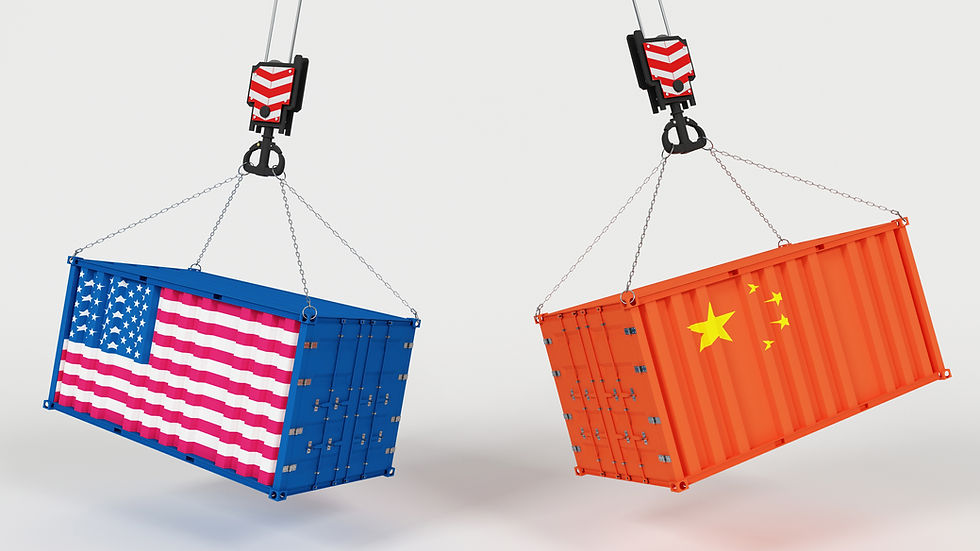USD Fades Amid Soft Data While CNY remains Dismal
- admin cys
- Jul 18, 2023
- 4 min read
Contributed by Jeff Cheah, Strategic Sales Manager

Soft CPI and Non-Farm Payrolls Drive USD Lower | skip to SGD/CNY U.S. inflation fell to its lowest level in more than two years in June, suggesting the Fed has been more successful in curbing price pressures. CPI rose 3% in June from a year earlier, according to data released by the U.S. Bureau of Labor Statistics last Wednesday.
After the seasonal adjustment in June, the CPI monthly rate rose by 0.2%. After deducting food and energy, the core CPI rose 0.2% m/m in June. The annual rate of unadjusted core CPI, which economists consider a better indicator of underlying inflation, rose 4.8% in June, the lowest since late 2021 but still well above the Fed's target.
Earlier, U.S. job growth slowed in June, but wage growth remained firm, and the unemployment rate fell. That suggests the labor market is strong enough for the Fed to raise interest rates later this month to tackle inflation.
Data released by the U.S. Department of Labor showed that the U.S. added 209,000 non-farm payrolls in June, a healthy increase but well below the downward revised 306,000 in May and the slowest increase since December 2020 a month. Dow Jones expects an increase of 240,000 non-farm payrolls for the month.
US unemployment rate fell to 3.6% in June from 3.7% in May, in line with expectations. In order to compete for the limited number of workers, employers have raised wages. Average hourly earnings rose 4.4% in June from a year earlier, unchanged from the previous two months but still well above pre-pandemic levels.
Bill Adams[1], chief economist at Comerica Bank, said that in the Fed's view, strong wage growth is a sign that the labor market remains very tight and could fuel inflationary pressures.
The latest employment and wage data provided further evidence that economic activity was not slowing down as Fed officials had expected, leading them to raise interest rates again at their July 25-26 meeting , taking them to their highest level in 22 years.
After choosing to stay on hold in June, Fed officials also previously indicated that they were likely to raise interest rates at the July meeting due to signs of recent strong economic growth and continued price pressures.


Softer data prints (US CPI, non-farm payrolls) driving USD lower reflect interest rate policy languages, where Fedspeaks has been rather hawkish, is not the dominant force driving the USD. We are mindful that this week is the start of Fedspeaks calendar blackout ahead of FOMC July 25-26 meeting. We believe USD decline is not unexpected, given that the Fed is near its end of its tightening cycle, and the Fed and markets are looking for rate cuts into 2024 and 2025. We expect the USD to be soft-to-moderate once the hawkish sentiments dissipate i.e., when soft US data prints “speak louder” than hawkish interest rate policy languages. All eyes are now on the next risk event which is FOMC July rate decision on July 25-26.

China Economy Continues to Battle Deflationary Pressures
Moving on to China, China's June CPI fell to 0% y/y, and PPI fell to 5.4%. China's June CPI was flat y/y, lower than the growth rate of 0.2% in May. The m/m decrease was 0.2%, the same as the previous month.
In June, the PPI fell by 5.4% y/y, higher than the 4.6% decline in May, and the decline expanded for the sixth consecutive month. The m/m decrease was 0.8%, and the decline narrowed by 0.1 percentage points from the previous month.
On the whole, prices of vegetables and services rose in June[2]. Pork prices continued to drop, and crude oil prices continued to slow down. For food items, due to the high temperature and rainy weather, the price of fresh vegetables turned from a 3.4% decrease in the previous month to an increase of 2.3%; the supply of other food products was generally sufficient, and most of the prices fell. Among them, the prices of eggs, fresh fruits, pork, and aquatic products fell by 1.2% to 2.6%. Non-food prices fell slightly.
Affected by the decline in international oil prices, domestic energy prices fell by 0.7%, an increase of 0.5 percentage points from the previous month. In addition, affected by factors such as "618" business promotion activities, the prices of industrial consumer goods after deducting energy turned from flat last month to a decrease of 0.3%. The demand for services continued to recover, and service prices turned from a 0.1% decrease in the previous month to an increase of 0.1%.
We believe that the data did not come in as a surprise, as the Chinese economy continues to battle deflationary pressures while the rest of the world is still fighting inflationary pressures. We see the US-China monetary policy divergence narrative still “very much alive” until the Fed decides to stop hiking rates. We also hold the view that sluggish external and domestic demand, along with weak data prints, does not improve risk sentiments for investors. At the interim, we see the support of the SGD/CNY at 5.3865.
Sources: [1] yahoo.com [2]mp.weixin.









